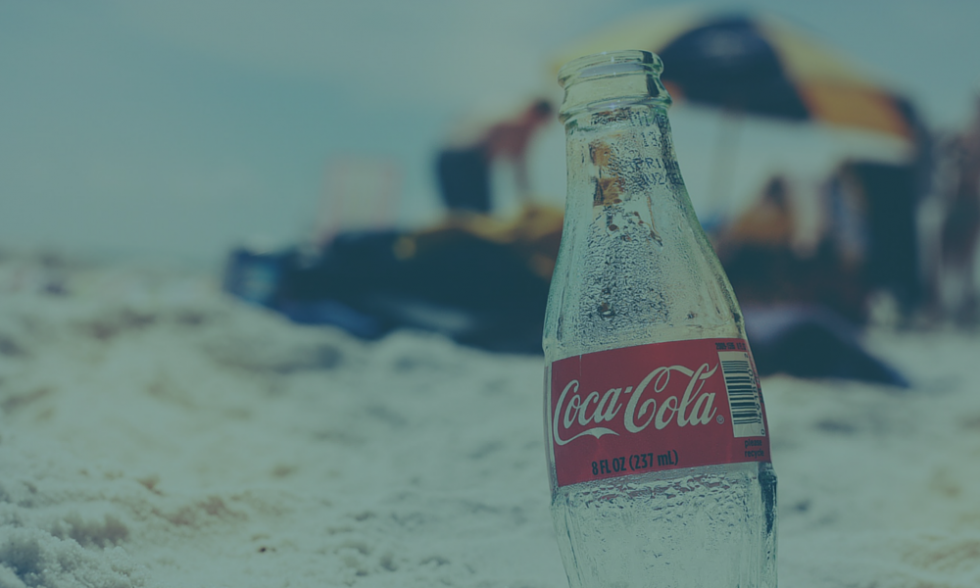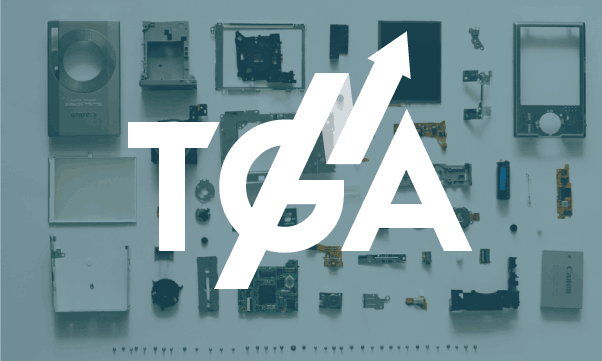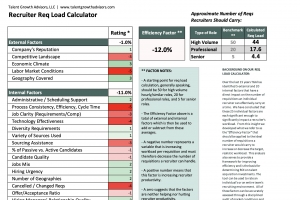Value-Driven Talent Strategy from Coca-Cola (Hypothetically Speaking)

Have you ever wondered how successful companies get to where they are? After all, there are lots of companies out there that can make similar products and sell them at roughly the same price. So what then is the “It” factor that helps certain organizations rise above their competitors and come out on top? While there are many elements that influence a company’s market capitalization, in many cases it is the ability to fine-tune its critical success factors (CSFs) and implement a value-driven talent strategy based on those CSFs that marks the difference in a company that excels and one that quietly fades away.
If you could take a sneak peek inside a well-known company like Coca-Cola, for instance, what would you see? What might their CSFs look like? What steps would they take to establish their talent strategy? How would they use that strategy as the foundation for all of their human capital-related efforts, activities and outcomes?
Although we can’t know for sure how Coca-Cola does it, we can use this successful company to illustrate how other organizations can use a three-stage talent strategy to maximize market capitalization and drive shareholder value.
The Three Stages of a Value-Driven Talent Strategy
Stage 1:
The first step is to determine the company market value and intellectual capital value. In this stage, the IC Algorithm is used to isolate and understand the value of intellectual capital to the company’s total value, including its component parts.
For the hypothetical Coca-Cola illustration, the enterprise value of The Coca-Cola Company from December 31, 2012, was approximately $178 billion. The value we calculate as intellectual capital as of that date was approximately $148 billion, or 84% of enterprise value. Interbrand, a brand consulting firm, separately estimated brand Coca-Cola as having a value of $79 billion. Since the brand Coca-Cola is one of the assets that drives the greatest value (cash flow) for Coke’s shareholders, we will separate that component of IC from the total to illustrate our example. And, with that, we have a simplified view of Stage 1.
Stage 2:
For the second part of this example, we want to understand how the $79 billion brand value is produced – created, sustained and grown – to help us identify the most critical human capital. In order to do that, we must connect the dots between critical success factors, work processes, the organization and the roles within it.
Critical Success Factors
Companies must do many things well to be successful. A number of those things stand out as higher priorities for producing specific intellectual capital. In our example, of all the things that must be done well at Coca-Cola, which are the most important to growing the value of brand Coke?
Let’s assume that the following four CSFs are deemed the most important relative to brand Coca-Cola:
- Trademark Enhancement – all of the things the company does that create a positive impression for the Coca-Cola trademark.
- Consumer Marketing – connecting with consumers and delivering against their needs better than the competition.
- Product Availability – wherever, whenever and however the consumer wants it.
- Consumer Packaging – the contour bottle, the up-to-date yet historic script, the color red.
- From these four, let’s select Consumer Marketing to carry through to the next connection in this abbreviated illustration. (In practice, we would carry through with the other three priority CSFs as well.)
- Work Processes – Consumer Marketing
In this step, we want to determine what work and processes must come together to drive success for the Consumer Marketing CSF. Under further examination, we determine that Consumer Marketing is primarily delivered through the following work streams:
- Marketing Intelligence – all of the work involved in understanding consumer and market behaviors.
- Consumer Communications – all of the work involved in crafting and delivering effective consumer messages.
- Leadership and Strategy – all of the work involved in leading, prioritizing and communicating activity against this CSF. (Note that we regard “Leadership and Strategy” as a priority work process for each CSF.)
- For purposes of our example, we’ll choose Marketing Intelligence as the work process to follow through to the next connection.
- Organization/Roles – Marketing Intelligence
Once the work processes are identified and understood, it is normally straightforward to connect with the organization units and roles that perform the work. In the case of the Marketing Intelligence work process, we may find organization units such as these involved:
- Category/Brand Management, which defines the marketing intelligence priorities, requirements and objectives.
- Packaging, which defines specialized marketing intelligence requirements for consumer and market packaging studies.
- Marketing Information, which designs, conducts and interprets consumer and market studies.
- Finally, each of these organization units is analyzed to determine which specific roles should be deemed “critical” because they connect directly to work that is critical to a significant part of IC and market value. With this final step, Stage 2 is complete.
Stage 3:
In the third stage, which will be addressed in a future post, companies determine the availability of talent for the critical roles that were identified through Stage 2. All roles are prioritized and evaluated for their market availability, then are plotted on a matrix with axes for Criticality and Market Availability.
Making the Connection for Accelerated Market Capitalization
The objective of Stage 2 is to identify the roles that are most important to delivering CSFs. In large and complex work environments, like Coca-Cola, connecting key work processes is an essential link to identifying these roles. In smaller entities, it may be possible to go directly to connecting organization units with CSFs, eliminating the additional analysis of work processes and still achieving an accurate and complete identification of critical roles.
After a thorough analysis of its critical roles, an organization can ensure that more resources – more effective recruiting, more aggressive approaches to compensation and development, and more targeted engagement efforts – are invested where the return on the talent is going to be the greatest. When done correctly, the result benefits the entire organization and market capitalization can be expected to accelerate.
Want to learn more about how business value, intellectual capital and talent are connected? Order our new book: Talent Valuation: Accelerate Market Capitalization through Your Most Important Asset.
Share this Article
Learn more about our unique approach to Talent Strategy Formulation.



